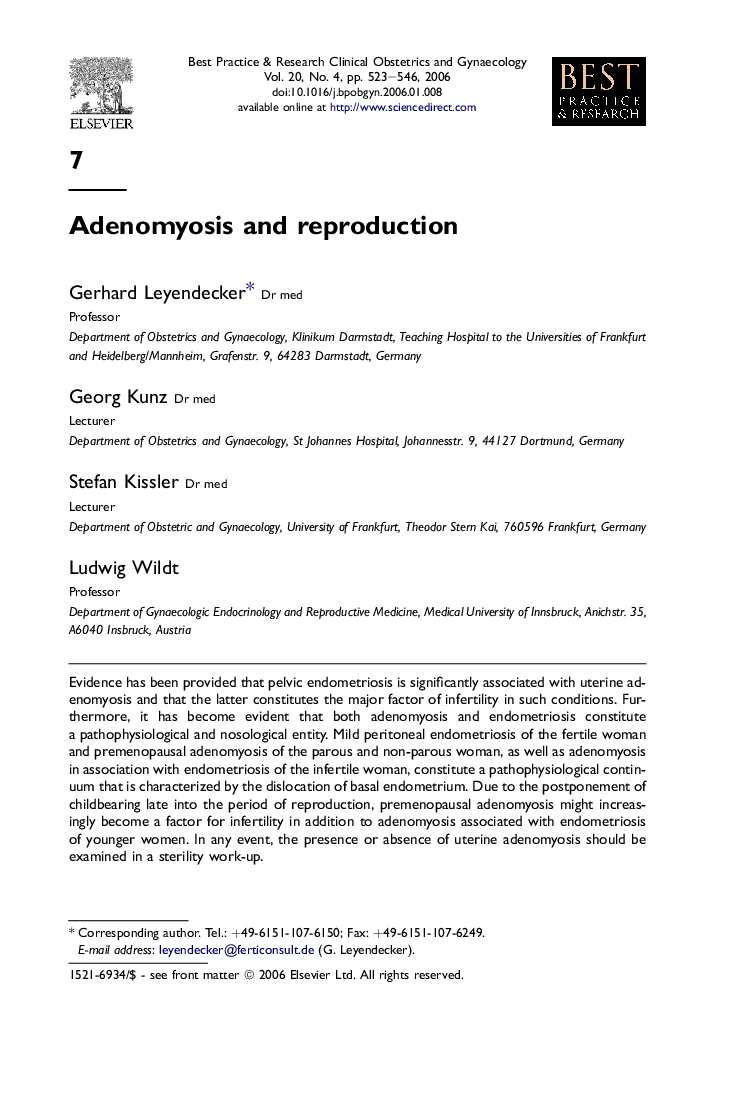| Article ID | Journal | Published Year | Pages | File Type |
|---|---|---|---|---|
| 3908109 | Best Practice & Research Clinical Obstetrics & Gynaecology | 2006 | 24 Pages |
Evidence has been provided that pelvic endometriosis is significantly associated with uterine adenomyosis and that the latter constitutes the major factor of infertility in such conditions. Furthermore, it has become evident that both adenomyosis and endometriosis constitute a pathophysiological and nosological entity. Mild peritoneal endometriosis of the fertile woman and premenopausal adenomyosis of the parous and non-parous woman, as well as adenomyosis in association with endometriosis of the infertile woman, constitute a pathophysiological continuum that is characterized by the dislocation of basal endometrium. Due to the postponement of childbearing late into the period of reproduction, premenopausal adenomyosis might increasingly become a factor for infertility in addition to adenomyosis associated with endometriosis of younger women. In any event, the presence or absence of uterine adenomyosis should be examined in a sterility work-up.
